Digital citizenship good practices: building European citizenship through media education

“Building European citizenship through media education. Impact on IES Sácilis from Pedro Abad, Spain.”
Carmen Pavón (Project coordinator)
Blas Segovia (Teacher at the Education Department of the University of Córdoba)
School
IES Sácilis
Teachers
Carmen Pavón Vázquez, José Carlos López Casado, Silvia Sirena Camarero Martínez, Elizabeth Luna Madueño, Sara Huertas Moreno, Pilar Ortega Moreno, Francisco Jurado Granero, Carlos Ortega Rodríguez, María Jesús Ruiz García.
Town
Pedro Abad (Córdoba)
Autonomous Community
Andalusia
Educational stage
Secondary compulsory education
Areas/Subjects
Spanish Language and Literature, Geography and History, English, Physical Education, Integrated Project, Music, Plastic and Visual Arts.
Language
Spanish and English.
Partner countries
Recognition
The project obtained the Quality Label in Spain and Hungary and it was awarded the eTwinning National Prize in Hungary, the first prize in the FOCO 2016 festival (Fuente Ovejuna, Córdoba) in the micro-documentary category for the Spanish short film “El Guernica por la paz”, and a honorable mention for the “Qualifica” short film of the Spanish team. Also, the short film “Deja de mirar,…empieza a ver” on immigration was selected for the international festival Plural+ organized by the Alliance of Civillizations.
Description
It involved schools from six European countries: the Colegiul National “Iosif Vulcan” from Oradea (Romania), the IV Liceum Ogolnoksztalcace im. Dra Tytusa Chalubinskiego w Radomeu de Radom (Poland), the Pécsi Kodály Zoltán Gimnázium from Pécs (Hungary), the SOUEE “Konstantin-Kiril Filosof” from Ruse (Bulgaria), the Lillesand Ungdomsskole” of Lillesand (Norway), and the IES “Sácilis” from Pedro Abad (Córdoba, Spain)
The project working language was Spanish; nevertheless, English was also used, and occasionally the language of each partner country. Four of the participating schools have bilingual sections where the pupils study Spanish as their first foreign language. The ages of the students involved ranged from 14 to 17 years old.
Based on the goals mentioned in the Europe 2020 strategy, the project revolved around three interconnected dynamics which we consider to be fundamental for addressing the challenges of the current European schools: media and information literacy (UNESCO, 2011), education for democratic coexistence, and language learning.
During the two school years of the project, students made short films in which they expressed their opinions and found out the opinions of other young European people on topics of their interest; they shared their productions among the six partners involved in the project. This exchange promoted the construction of significant knowledge for understanding and participating in democratic societies; the viewing and debating of other students’ work gave them the chance to become familiar with different points of view and issues that young Europeans with different personal, professional, cultural, and educational backgrounds. This helped our students to develop respectful attitudes and overcome prejudice against people from other countries and different cultures; also, it replaced the ethnocentric tendency promoting the idea of different European cultures.
The face-to-face international cooperation meetings held in six occasions were especially important because it gave the students the opportunity to make short films working in teams which involved students and teachers from all six participating countries.
The eTwinning platform was used in order to ensure and promote collaborative work, and the TwinSpace working space was used as a tool for coordinating, working together, and disseminating the contents. The use of the platform significantly improved the students’ ICT skills and enabled their different countries and cultures to come together; it also improved their motivation and made them part of an innovative project. In general, the platform allowed the partners to establish cooperation relations of great pedagogic value. The work carried out on the eTwinning platform obtained the Quality Label in Spain and Hungary; in Hungary the project also won an eTwinning National Prize..
Objectives and methodology
The project objectives can be summarized as follows:
a) Integrate media and information education into the secondary education curriculum in order to produce information and properly disseminate it.
b) Reflect on the issues that affect young people, express opinions and contrast them with other European students’ points of view.
c) Get to know Europe’s cultural diversity in order to reduce prevailing stereotypes.
d) Use and value the Spanish language and other European languages as necessary tools for interpersonal communication and developing international projects.
With these objectives and this methodology in mind, we worked together in a collaborative way to carry out activities that created various final products which make us feel very proud and which were highly appreciated by the educational communities of the participating schools..
The methodology we used integrated the assumptions on media and information literacy (MIL) mentioned by UNESCO (2011) into the curriculum, including the development of the digital competence as well as other competences such as the linguistic, social, and civic competence.
The videos the students created enabled them to express their own points of view, promoted their active involvement in finding meaningful information as well as their collaborative work, since the productions were carried out using the project-based approach.
Starting point
The IES Sácilis from Pedro Abad is a very small school situated in a town with under 3000 inhabitants which has two schools (one is public and the other subsidized). The need to make our work known and to increase the number of students has led us to make innovative pedagogic choices for some time now. One of these choices was getting involved in implementing European projects; the educational community (teachers, students, and families) greatly appreciated them and they had a significant impact in the school as well as at a local level. During the 2011 to 2013 school years we coordinated a Comenius project called Human Rights and Digital Literacy for Young Europeans.
This was the starting point which made us consider the suitability to create an Erasmus+ project together with schools with Spanish bilingual sections since Spanish would be the working language of the project. The project was designed together with five partners from four Eastern European countries and one Northern European country, Norway, which had Spanish as a second working language in their school. The partner schools are very different; some are situated in large cities such as Ruse (Bulgaria), Pécs (Hungary), and Radom (Poland), while the one from Norway is situated in a medium-size town called Lillesand; there were also significant economic differences between the student families, depending on the country..
All the teachers from our high school were involved..
Activities
Over the last two years, we have carried out many activities according to the objectives we had established for the project. Two of these objectives revolved around education for democratic coexistence and digital literacy and that is why most of the activities were focused on disseminating the core values and principles that govern our society (freedom, equality, etc.) by means of different ICT tools. Next we will describe the activities related to the creation of videos and other activities that stand out due their international collaboration using ICT.
1.- SHORT FILMS
The main activity carried out throughout the project is related to the students creating short films in which they express their opinions and concerns regarding the world around them.
The short films creation was based on two lines of approach:
a) National productions:
All the year 3 and 4 students of Secondary compulsory education put together teams in their classrooms, decided upon a topic that was interesting to them, did research on it, and then they wrote a script and its corresponding storyboard. Afterwards they used the scripts to make a film and then edited the video.
The issues addressed in the short films made by the different countries were:
· Spain: school bullying, the uncertain professional future of well trained young people, animal cruelty, making decisions about an unwanted pregnancy.
· Romania: being pregnant at 16 years old, drugs, domestic violence, young people’s lack of free time, and the dangers of social networks.
· Hungary: the excessive use of mobile phones and its impact on personal relationships, parents not paying enough attention to their children, and problems that may seem unimportant, but have a huge impact on the persons who are facing them.
· Norway:bpeer pressure in making decisions, optimism, and not judging others.
· Bulgaria: the importance of friendship, drugs and their consequences, the role of friendship in teenage love relationships, young people and how confident the feel, the need to have family support when faced with problems, and the difference between how teachers and students perceive life in general and exams in particular.
· Poland: domestic violence, alcoholism, migrations, illegal work camps, and human trafficking.
b) International productions:
The pupils who were involved in the student exchange meeting (3 from every country, 18 in total) created three teams. All teams had to have a student from each of the participating countries. Each team had to decide upon a topic that was especially interesting to them and agree on how they would address it. This obviously led to a major debate because, even if there were many issues in which all of them were interested, there were other topics that weren’t interesting for all of them, for instance unemployment for the Norwegian students. During the second exchange meeting, the students who were involved (different from the previous ones) had to record the video; and the students who participated in the third visit had to edit the video.
During the second year of the project, we had a similar process; nevertheless, during the third exchange meeting we decided to put into practice an international radio programme and design the news in a collaborative way.
The international short films addressed issues such as:
- 2014-2015: smoking at an early age, lack of free time that affects students in all countries, being forced to emigrate because of the lack of professional perspectives in one’s home country.
- 2015-2016: The pressure in making decisions at this age, the psychological impact of “Likes” on social networks, and the fear of immigrants.
This last short film was selected to compete in the International Festival Plural+ which focused on the migration issue this year.
2.-OTHER ACTIVITIES:
Of all the various activities we carried out, we would highlight three: Podcast, Cultural Trivia, and My Favourite Word. The rest of the activities are hosted by the TwinSpace and detailes about them are offered in the magazine we published as the final product.
a) Podcast. We created two radio shows. One was made as collaboration between all the schools; the topics had been decided upon beforehand and the students needed to collect information about them from all six countries. For instance, the IES Sácilis students prepared the part about music. The second radio show was put together during one of the international meetings; each group included students from the six countries and had to prepare the news for the different sections of the show and record them. The final result was a radio show designed by the 18 students who attended the meeting. They used Spreaker and Audacity. (https://twinspace.etwinning.net/896/pages/page/129290 )
b) Cultural Trivia. The students prepared questions on different topics they previously had agreed on and uploaded them on the Educaplay website. The contents that were designed using the Kahhot tool were later used in one of the international meetings. https://twinspace.etwinning.net/896/pages/page/71521
c) Mi palabra favorita. My favourite Word. Students from each country made a less-than-one- minute video in their mother tongue with Spanish subtitles in which they explained what their favourite word was. A vote on Facebook was organized with the different words Facebook and we made a final product with the most voted words in each country. https://twinspace.etwinning.net/896/pages/page/74126
Fostering critical and reflective thinking
Although most activities were related to the making of the short films, a number of other activities were carried out in order to develop students’ reflective thinking. The processes were equally if not more important than the final results since they entailed searching for information and reflecting on it. On the other hand, the students and their families used the videos produced by the other partners from the different countries to discuss the issues they raised in their productions.
For instance, in the phase when the students had to choose a topic and develop arguments, the teachers created dynamics meant to foster students to reflect on their world and how they perceive it. The process was completed when they chose a topic and decided on the way to address it from all the other different proposals.
If we take a look at the issues students addressed, we can see that they dealt with topics regarding social problems such as immigration, illegal work, or domestic violence (seven videos), and problems that affect young people such as social networks (three videos), addictions (three videos), school environment (two videos), and interpersonal and family relationships (eleven videos). The videos have now become educational resources for the tutoring classes in the IES Sácilis school; students can relate to the arguments presented by the partner students in the videos and this encourages them to address important issues for teenagers.
We would also like to point out that the teachers included the videos in the training sessions with family members; they carried out video forum sessions on relevant issues for mothers and fathers (unwanted pregnancies, immigration, etc.)
The same type of activity was also implemented during the international meetings with students and teachers from the six countries; for instance, at the Hungary meeting there was an activity on migrations and the students had the chance to express their opinions and share points of views on this extremely topical issue.
Social networks were used for communication, debate, and dissemination purposes (project Facebook and Twitter as well as the TwinSpace forum where year 3 and 4 Secondary compulsory education students were involved).
Lastly, we want to emphasize a unique activity which shows the impact of the project. During the international meeting that took place in Pedro Abad in June 2015, we organized a session with university students attending the Media Education course at the Primary Education bachelor degree of the University of Córdoba; the teachers and students from the six partner countries also attended the session and, after viewing a few of the videos, there was a debate about them. In 2016 there was another training activity led by IES Sácilis students and teachers who explained the Erasmus+ European program and the eTwinning platform.
How did this eTwinning project contribute to achieving the goals of the Paris Declaration?
The Council of Europe resolution on encouraging political participation of young people in democratic life in Europe (2015/C 417/02) puts forward a series of objectives aimed at achieving greater involvement of young people in democratic culture.
We can state that implementing this project has partially contributed to achieving the objectives included in the aforementioned declaration since it promoted the development of social competences related to democratic values and human rights such as freedom of expression and the respect of diversity (article 19) and promoted the development of a programme on media literacy promoting the capacity to critically analyze information in today’s knowledge society as well as programmes on ICT skills aiming at the development of technological user skills that allow to access, manage, assess, and create useful online information (article 21).
Promoting active citizenship and preventing intolerance and racism
In our view, developing an active citizenship should be based on a citizenship education that allows compulsory education students to get to know problems that concern our European society and reflect on the different social problems that affect young people. Given the objectives it established and the activities it carried out, this project implemented a set of strategies in order for the involved students to first of all become aware of the issues that interest them and then, by means of the creation of videos, present their individual opinion on these issues. The communication and interaction necessary for collaborating during the process of making the videos and the dissemination of these productions fostered a debate among the members of the educational community on the students’ messages. The audiovisual content became a tool to a greater or lesser extent for debates on issues such as immigration, job insecurity, or the dangers involving technology. The debate occasionally went beyond the school boundaries, but it mainly gave the students the opportunity to compare their ideas with those of other girls and boys from other places of Europe.
118 videos that express the views of young people from six countries were uploaded to the YouTube project channel and they had a total of 8,070 views. The most part come from the countries which were involved in the project, but there are some that come from the United States of America, Portugal, United Kingdom, Latin American countries, Italy, France, Germany, etc. We think that the debates these videos generated in the schools and with the families, as well as the impact that these students’ opinions might have on the people who view their videos can help to prevent racism and fight against intolerance.
Project impact on IES Sácilis
The project had a substantial impact on the school on the following levels:
– Teaching staff and School board assessment. The teaching staff and the school board received a quarterly report on all the activities carried out within the project; they had timely and continuous information during the two project years. They also assessed the project and the results were positive.
– Teacher involvement. 100% of the IES Sácilis teachers were involved in this project. In order to get all the teachers involved, there were two teams; the driving force team was committed and in charge of the project and the collaborating team was occasionally involved depending on the subject they taught. Numerous general school activities such as “Bulbos Solidarios”, “Día de la Paz”, “Abrazos”, etc. involved all the members of the teaching staff and all the students.
– Subjects. The design of the national short films was coordinated by the teacher responsible for the Integrated Project subject; the scripts for the films were written during the Spanish language classes; the search for information on the topics was carried out during the Geography and History classes; the films were shot during Physical Education and Alternative to religion classes; the short film scripts were translated into English during the English language class; the debates were coordinated from the school Orientation department; the design of posters, the mural paintings on different countries, and the drawing competitions participation in Romania was coordinated from the Plastic and Visual Arts department; the radio show was coordinated from the Music department; the Math and Technology department oversaw the statistical data; the department of complementary and extracurricular activities coordinated the project activities; and the general school activities were coordinated from the French department and the Library manager.
– Evaluations. Several evaluations and self evaluations were carried out all throughout the project. With regards to the social and civic competence assessment, a rubric evaluation was designed; the results show that both students and teachers substantially improved this competence after being involved in this project. This allowed them to improve their comprehension of the social and civic reality in a more critical way and to trigger a positive social change.
– Methodology changes. The active inclusive collaborative and hands-on methodology used in all European projects developed in our school greatly fostered teacher involvement as well as the integration of new methodologies and new lines of work.
-Training. During the two years of project implementation, a significant percentage of teachers in the school received eTwinning training such as the specific eTwinning courses; many teachers were involved in MOOCs, in project-based learning course, and in learning communities.
Synergies with local organizations, immigration and refugee associations, etc.
The following are the most significant examples for Spain:
– The local government.-We maintained a close collaboration with the Pedro Abad Town Hall with regards to all the details of the project development. The mayoress hosted a reception for all the visiting teachers and students, as well as all the other mayors and mayoresses from the differentvisited cities. Moreover, in Hungary, we were received by the Instituto Cervantes director and the Spanish ambassador.
– The Faculty of Education Science, University of Córdoba.– Teachers from the Education Deprtment provided the project with assessment and the IES Sácils students and teachers attended the Media Education class and presented the technology tools they had used and explained the methodology and the work they had done.
– Non-governmental organizations.– We organized an activity together with the “Maizca” NGO; their goal is to promote the development of the Guatemalan people (Guatemala) and the activity was called “Bulbo solidario”. The other collaboration we had was with the Kamira National Federation of Gipsy Women and it was a training session on European projects.
TO FIND OUT MORE:
BIBLIOGRAPHY
Aparici, R. (eds) (2010) Educomunicación: más allá del 2.0. Barcelona, Gedisa.
Frau-Meigs, D. y Torrent, J. (2009) Políticas de educación en medios: hacia una propuesta global. Comunicar. Huelva, Grupo Comunicar.
Segovia Aguilar, B. (2010). Educación comunitaria y nuevas alfabetizaciones. En R. Aparici (coord.) Conectados en el ciberespacio (pp.217-234). Madrid. UNED.
Segovia, B., Pavón, C. & Racionero, F. (2015). Derechos Humanos y Alfabetización Digital para Jóvenes Europeos. Una experiencia internacional de Educación Mediática en Secundaria. En Fueyo, A., Rodríguez-Hoyos, C & Pérez-Tornero, J.M. (Eds.) Los territorios de la Educación Mediática: experiencias en contextos educativos. Barcelona, UOC.
UNESCO. (2005). Hacia las sociedades del conocimiento: informe mundial de la Unesco. Paris, UNESCO.
UNESCO. (2011). Educación mediática e informacional. Curriculum para profesores. París, UNESCO.
WEBSITES
https://twinspace.etwinning.net/896/home
https://www.facebook.com/erasmusplus.ciudadania/
https://www.youtube.com/channel/UCELPXvlMCMb5I9PRf-gz5pg
https://twitter.com/CiudadaniaEPlus
Final product which reflects the identity traits of all the different countries and which includes some of the project more significant activities:
http://www.calameo.com/books/00474690428a0f4adb405
Celebrating the Xth eTwinning anniversary
“Let’s light up our whishes for the young people” was a celebration and a playful and collaborative activity symbolizing the importance of fighting for young people’s rights from all over Europe.
https://twinspace.etwinning.net/896/pages/page/71091
Celebrating diversity with eTwinning
Here at the IES Sácilis school we want to join the eTwinning campaign so that young people from different European countries and different backgrounds and cultures could get to know other young people’s views on diversity.
https://twinspace.etwinning.net/896/pages/page/123892
Romanian televisión news report on one of the meetings where we can see the students working in the TwinSpace:
School campaigns

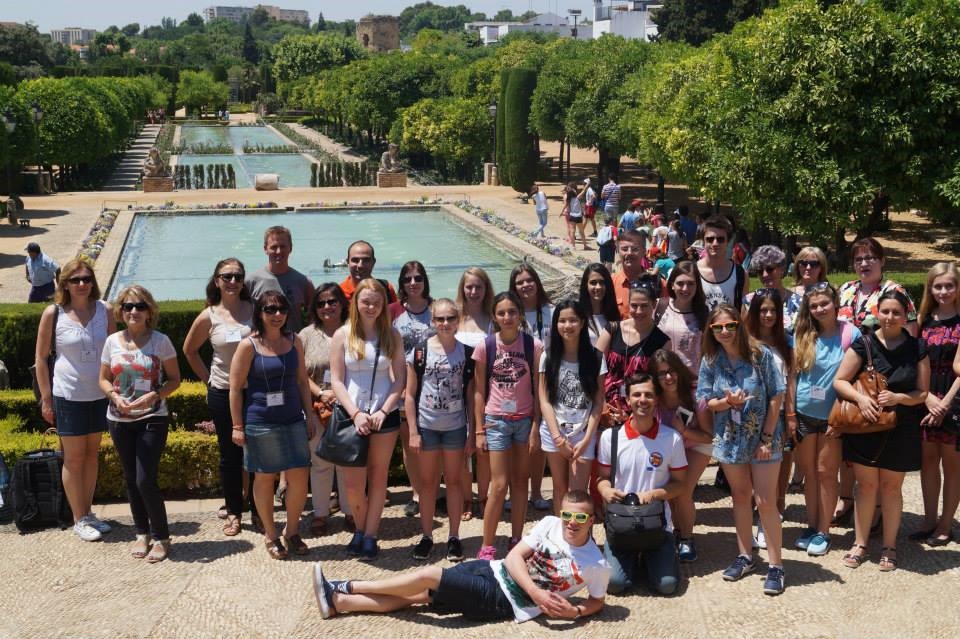
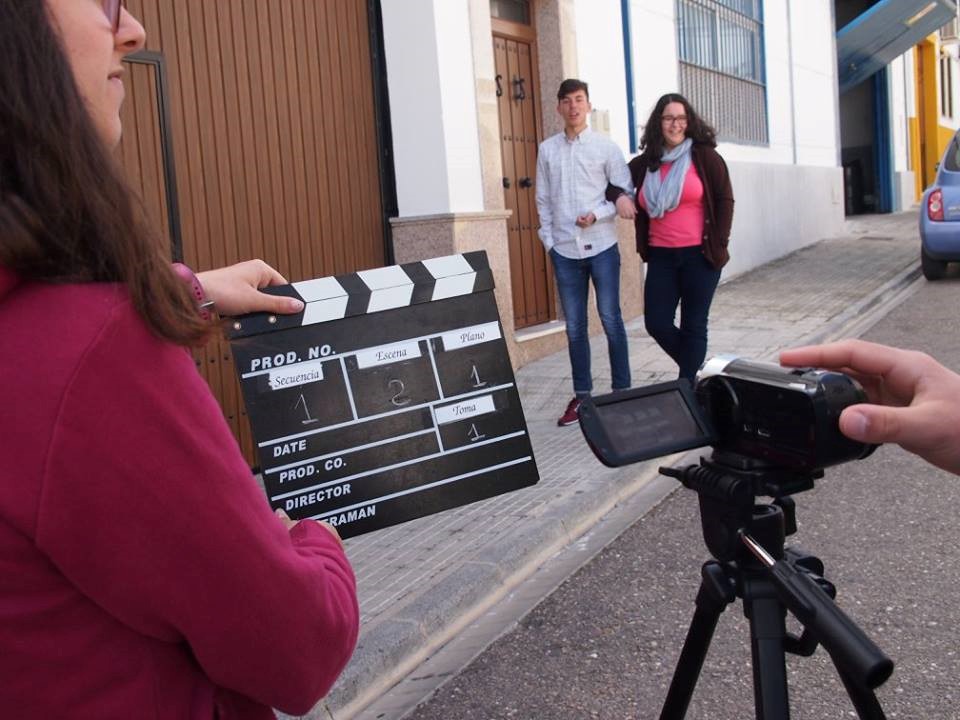

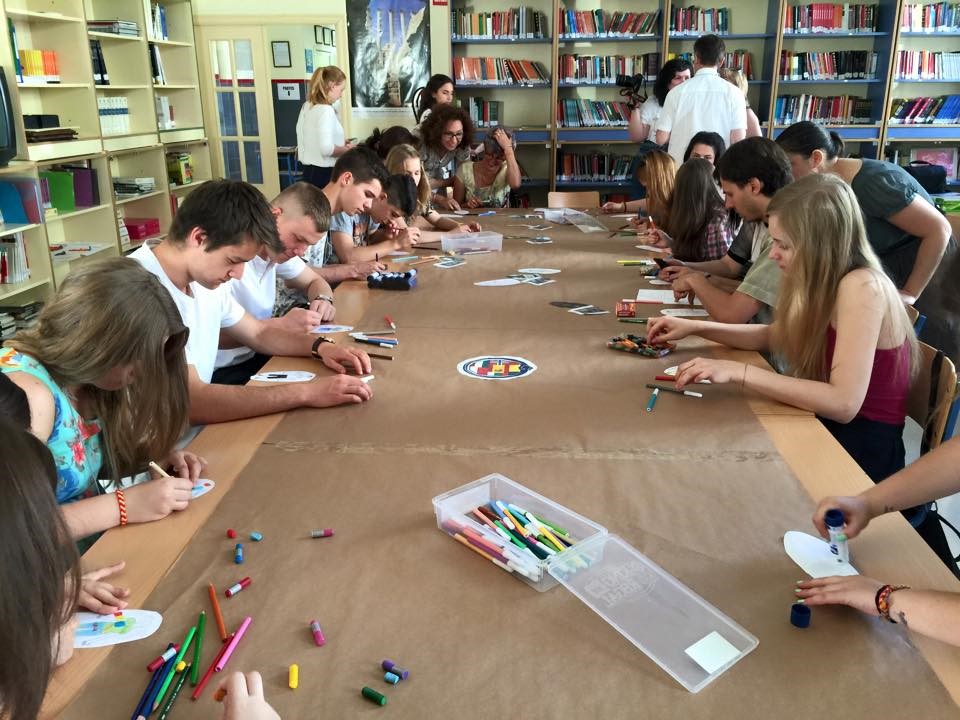
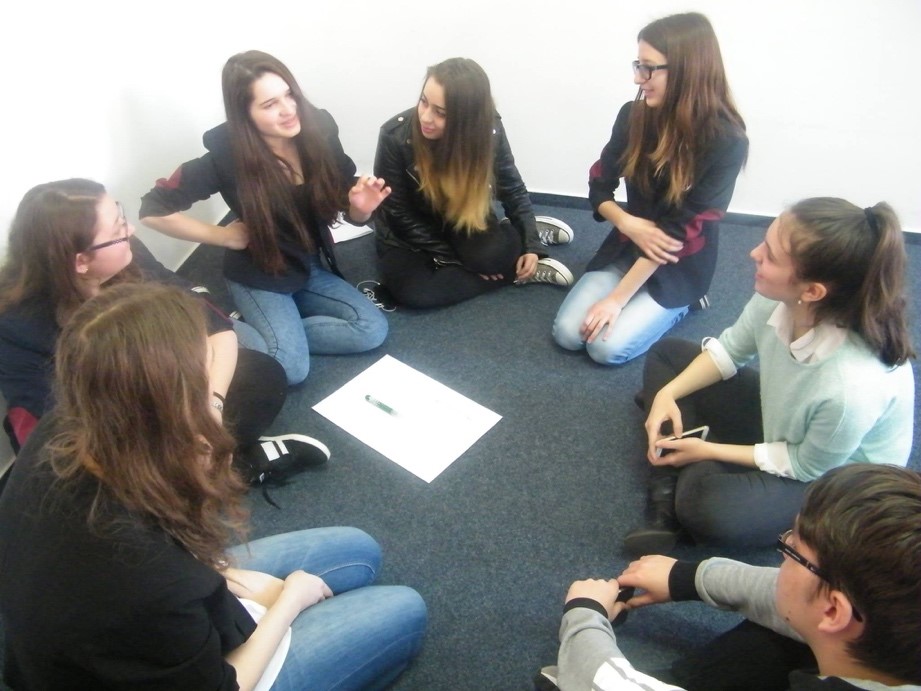

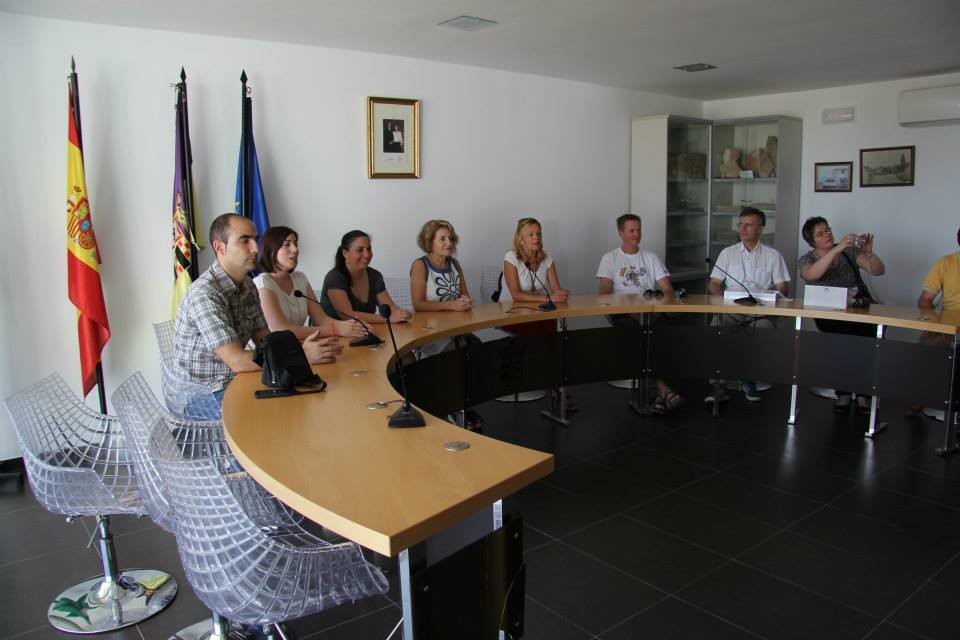




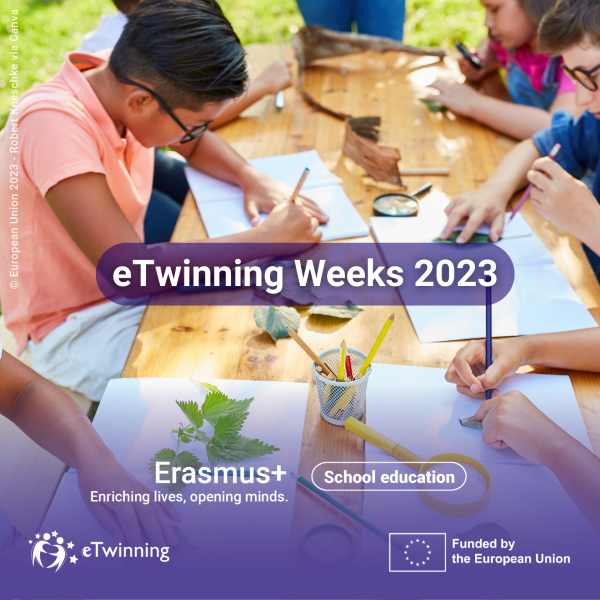
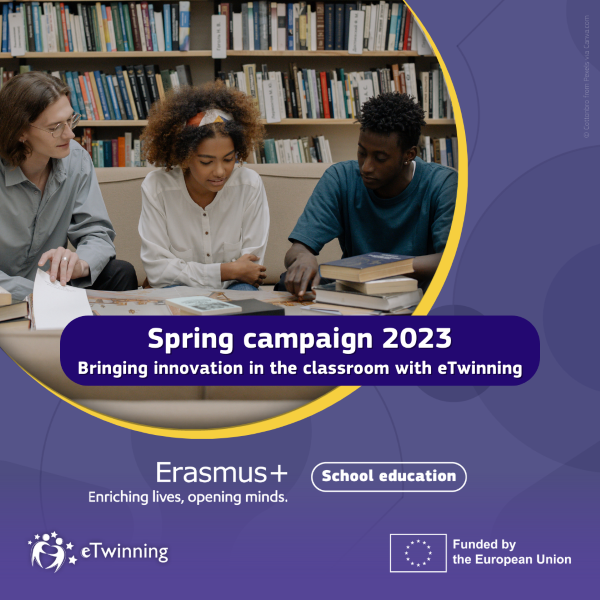


Reglamento de protección de datos (información básica)
En cumplimiento de la normativa de protección de datos personales, le informamos de que sus datos serán incorporados al tratamiento denominado “eTwinning participación”, cuya finalidad es la participación en el proyecto de colaboración europeo eTwinning.
Puede usted ejercitar los derechos de acceso, rectificación, oposición, supresión (“derecho al olvido”), limitación de tratamiento y portabilidad y a no ser objeto de decisiones individuales automatizadas que sean de aplicación de acuerdo a la base jurídica del tratamiento. Podrá hacerlo en la sede electrónica del ministerio (http://www.educacionyfp.gob.es/servicios-al-ciudadano-mecd/catalogo/educacion/varios/proteccion-datos.html), presencialmente en las oficinas de registro o por correo postal.
Al rellenar y enviar este formulario usted concede su consentimiento inequívoco para el almacenamiento de sus datos en nuestros ficheros tal y como se especifica en nuestras normas de privacidad.
Normas de privacidad
NOMBRE DEL TRATAMIENTO
eTwinning participación.
FINALIDAD
Participación en el proyecto de colaboración europeo eTwinning.
RESPONSABLE
Dirección General de Evaluación y Cooperación Territorial del Ministerio de Educación y Formación Profesional
C/ Alcalá, 34; 28014-MADRID.
DELEGADO DE PROTECCIÓN DE DATOS
Subdirección General de Atención al Ciudadano, Documentación y Publicaciones.
c/ San Agustín 5, 28014-MADRID
dpd@educacion.gob.es
PLAZOS O CRITERIOS DE CONSERVACIÓN DE LOS DATOS
Sus datos se conservarán durante el tiempo necesario para la tramitación y respuesta de su solicitud. Además, será de aplicación lo dispuesto en la normativa de archivos y documentación.
DECISIONES AUTOMATIZADAS
No se realizará toma de decisiones individuales automatizadas basadas en la información que usted nos proporciona.
PLAZOS O CRITERIOS DE CONSERVACIÓN DE LOS DATOS
Sus datos se conservarán durante el tiempo necesario para la tramitación y respuesta de su solicitud. Además, será de aplicación lo dispuesto en la normativa de archivos y documentación.
LEGITIMACIÓN O BASE JURÍDICA DEL TRATAMIENTO
El tratamiento es necesario para el cumplimiento de una obligación legal aplicable al responsable del tratamiento, artículo 6.1e) del RGPD, Reglamento UE 2016/679, y en la Ley 8/2013, de 9 de diciembre, para la mejora de la calidad de la enseñanza.
DESTINATARIOS
Departamentos de Educación de las CC.AA que llevan proyectos europeos, para distintas gestiones, como la tramitación de permisos ausencia del centro, envío de información relevante, etc.
DERECHOS
Puede usted ejercitar los derechos de los artículos 15 al 22 del RGPD que sean de aplicación de acuerdo a la base jurídica del tratamiento. Podrá hacerlo en la sede electrónica del ministerio, presencialmente en las oficinas de registro o por correo postal.
AUTORIDAD DE CONTROL
La autoridad de control en materia de protección de datos personales es la Agencia Española de Protección de Datos (http://www.aepd.es).
CATEGORÍA DE DATOS PERSONALES
Los datos personales que se tratarán son los que figuran en el formulario que usted nos proporciona.